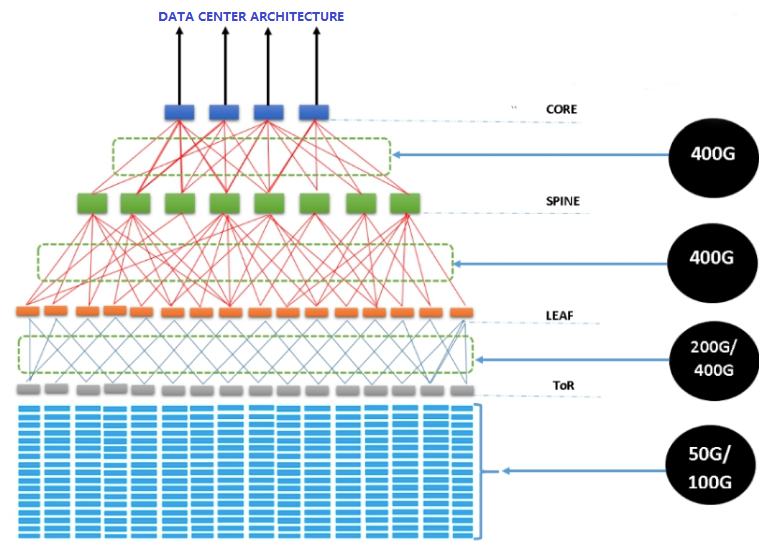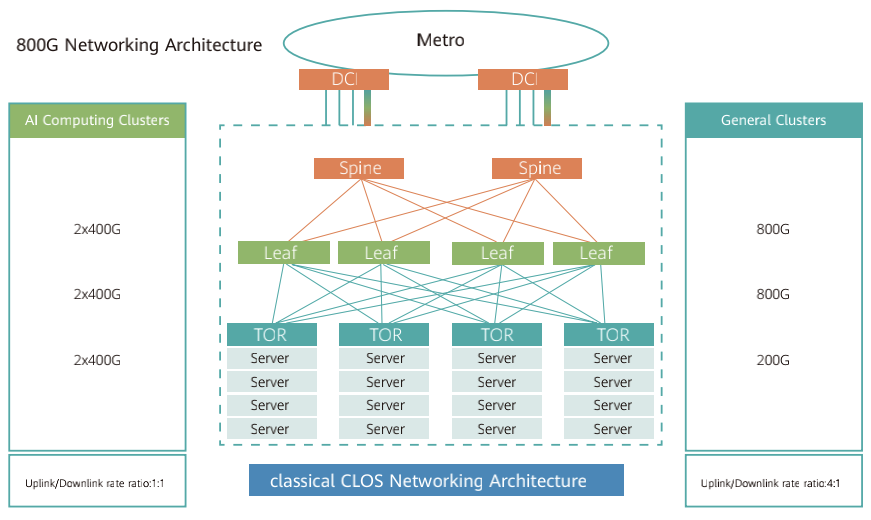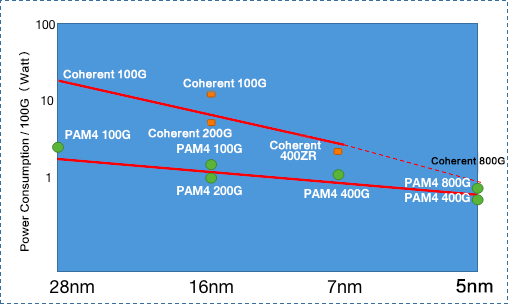In the 400G era of data centers, there are two main modulation methods, PAM4 applied to DC internal connections and coherent methods for DCI or edge interconnects.

PAM4 is an intensity modulation in which the bit rate is represented by turning the laser on and off. Unlike NRZ with level 2 amplitude modulation, PAM4 is level 4 pulse amplitude modulation, where 4 represents four different amplitude states. They correspond to four states, 00, 01, 11, and 10 respectively, and each symbol represents 2 bits of information. As a result, PAM4 can carry 100Gbps of data at 53G baud.
However, a module with PAM4 modulation that achieves 400Gbps requires four independent wavelengths and separate lasers, modulators, and receivers. Due to the use of direct modulators, the transmission distance is mainly short. However, in this scenario, fiber resources are abundant, and each fiber carries one channel, even if multiple wavelengths are not a problem. This is why PAM4 is used for DC internal connections at 400G.
In the DCI long-distance interconnection scenario, PAM4 seems to be a bit overwhelmed, how to solve it? Coherent modulation based on the 400ZR protocol with a baud rate of about 60Gbaud operating in dual-polarized 16QAM (DP-16QAM) modulation (optical signals are encoded in both phase and amplitude) supports single wavelengths carrying 400Gbps or higher.
This of course places higher performance requirements on the optical module laser, requiring ultra-narrow linewidth lasers, I/Q modulators, and coherent receivers. Compared to the direct modulation used by PAM4, it can transmit much further.
So, by the 800G or even 1.2T/1.6T era, who are the most competitive of these technologies in data center application scenarios?

As the technology evolves, PAM4’s 100G transceiver can also reach longer distances (Inphi’s ColorZ 100G transceiver). In the 800G era, the technology gap between PAM4 and coherent will become even smaller. And deciding whether a technology is competitive is simply a matter of considering cost and power consumption. Let’s take a look at these two aspects.
The easiest way to double the data rate while keeping the baud rate constant is to copy the hardware. PAM4, for example, can use four or eight 100G/200G wavelengths, and coherent modulation can use two 400G wavelengths.
Another way is to increase the baud rate, say by doubling it to about 110Gbaud. PAM4 still requires multiple wavelengths, and in the case of coherent modules, the modulation is the same. But doubling the baud rate will bring a cost increase. For coherence techniques, it depends on whether the IQ modulator and receiver are implemented using InP or silicon photons.
![]()
For PAM4, an indirect modulation EML can be used, which is a laser with built-in indium phosphide (InP). Or an integrated array using silicon photon modulators and an InP laser array. However, for both PAM4 and coherent technologies, InP modules are more costly, while silicon light is cheaper.
In addition, with the evolution of chip technology from 7nm to 5nm or even 3nm, DSP not only improves the processing rate but also performs more and more excellently in power reduction. The relationship between DSP power consumption and CMOS of the coherent module and PAM4 transceiver is shown in the following figure.

As can be seen, the power consumption of the PAM4 is nearly 10 times lower than that of the coherent module at 100G rates, but this difference becomes less pronounced at 800G rates using 5nm COMS.
However, in the 800G PLUGGABLE MSA’s single-channel 200G for 800G/1.6T white paper, the module based on 200G per-channel direct modulation detection is considered to be lower in cost and lowest in power consumption, with the best price/performance ratio, as shown in the table below.
| 800G Solution | 2×400G CWDM4 | CWDM4 | Coherent |
|---|---|---|---|
| Number of Laser | 8 | 4 | 2 |
| Modulator | DML/EML | EML | SiOh/InP Tunable narrow linewidth,>13dBm |
| Driver/Modulator | 8 | 4 | 4 |
| PD/TIAs | 8(single-ended PD) | 4(single-ended PD) | 4(balanced PD) |
| Component Bandwidth | >25GHz | >50GHz | >50GHz |
| FEC Restriction | 2E-4 | 2E-3 | TBD(高于IMDD) |
| Forward Compatibility | Supported | Supported | Unsupported |
| Fiber Pair | 2 | 1 | 1 |
| Power Consumption | 16-18W | 12-14W | 20-24W |
| Cost | $$ | $ | $$$ |
